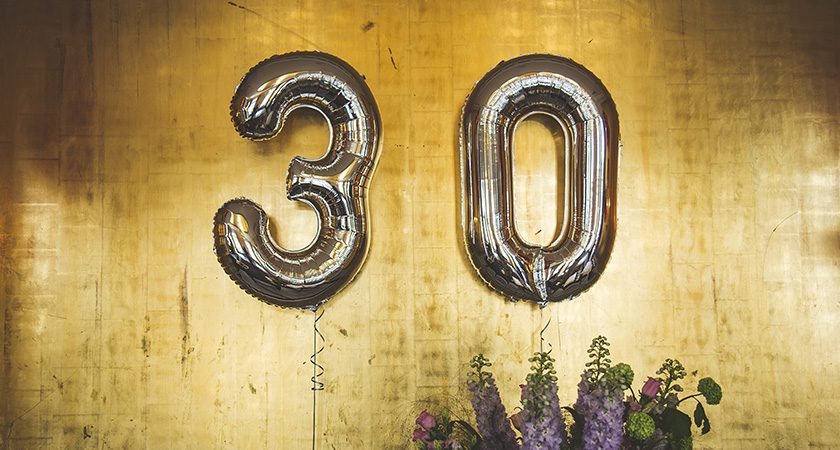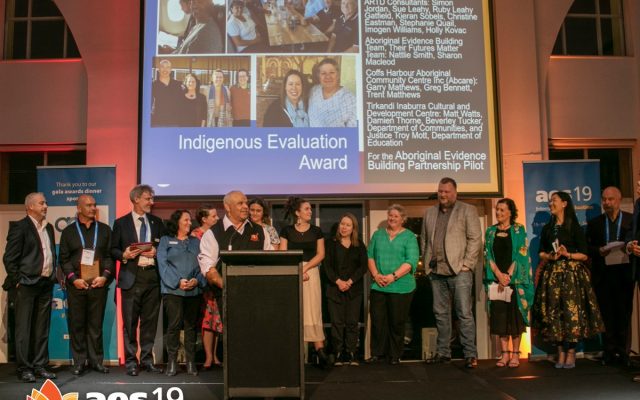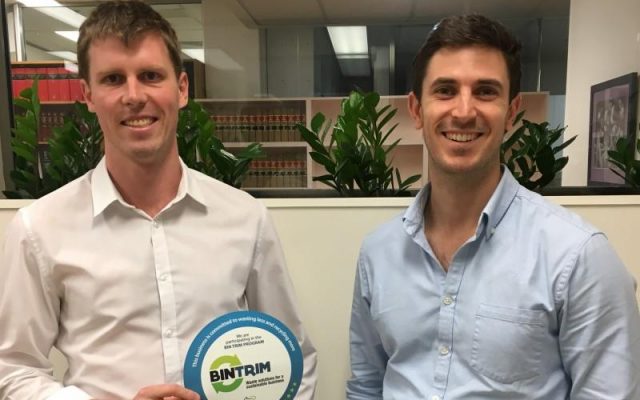
Celebrating ARTD’s 30th birthday with Michael Brooks
Since starting at ARTD, I have only interacted with Michael, one of ARTD’s founding partners, a handful of times. From the staff meetings to Christmas parties, Michael and I will briefly catch up when he’s in the office. But I’ve always wondered what stories he could tell about ARTD and its 30-year history. During this interview I got my answers.
I started the interview by asking how ARTD was established.
In strict terms, Chris Milne and the previous founding partner, Dave Morrissey were the ones who really had the concept of setting up ARTD; I was just an interloper picking up on their ideas. For all three of us, our common connection was working at the Aboriginal college, Tranby, in Glebe, Sydney, and we were doing consulting-type work there, which we wanted to transfer.
ARTD stands for Applied Research, Training and Development. At that stage, it was about training and development, working with non-government organisations, building their skills to work with government and deliver programs so evaluation and research wasn’t so present in the start.
I do remember my first project for ARTD, it was to do with a computer-based training program to help Aboriginal community organisations sign up tenants to leases, which is interesting because a lot of my subsequent long-term policy work has been around housing policy and working with community housing providers. It seems that housing theme started back at the very beginning. That first project was in 1990 – see, I’m old!
After convincing Michael that he wasn’t really that old, I proceeded to ask him what he was most proud of about ARTD.
For the first ten years it was just David, Chris and myself. We had a small number of staff, Kerry and Klas for instance, but it was never really a consulting firm; it was a loose collection of people doing consulting work from home and there was no office. Really, if you had asked us back then about being a firm with an office in the city, I don’t think any of us would have imagined it, so I guess that’s what I’m proud of (and partly surprised).
This was an eye-opening reflection for me, as I have only ever known ARTD as a company of around 30 staff (and now more) with offices in Sydney, Melbourne and Brisbane. To think that ARTD started as a home office with three core staff and a few associates goes to show how far we’ve really come over the last 30 years.
As someone who has been at ARTD for less than two years, I haven’t seen a lot of projects finish and am only really well acquainted with the projects I’ve worked on. I was keen to know about the most interesting project Michael had worked on.
There have probably been about a thousand of them. It’s hard to pick one. Looking back, it probably wasn’t one project, but a series. I was heavily involved in establishing the national regulatory system for community housing, which was bringing together all the states and territories into a national scheme and needed national legislation to underpin it. It took about seven years to get there, but the policy direction has persisted… government is now investing a lot more in community housing. In NSW now, about 35% of social housing is delivered by community organisations and that’s really been underpinned by there being a very well-regarded regulatory system. It gave them the confidence to invest in community housing and transfer long-term leases. We still don’t have Victoria or Western Australia signed up, so there is still more work to be done.
I haven’t been part of a national-level project in my time at ARTD. To know that we have contributed to social housing on this level resonates with my desire to make a difference at this higher level and positively impact our communities.
As a 21-year old researcher, I’ve been alive for less time than ARTD has been established. It seems like a long time to do the same work, so I asked Michael what keeps this work interesting and fresh.
At the moment, it’s the passionate young people here. For a long time, we had virtually no staff turnover and our people had been here a very long time and that was great, but you do need that renewal and you do need that energy and excitement young people bring. Seeing people like Jade, who started as a research assistant, becoming our Managing Director, I think that keeps me motivated.
As one of the youngest people in the business, I found this inspiring. I love that Michael has this level of respect for our young and fresh perspectives – it motivates me to push on and see how far I can go here at ARTD. This place has helped me grow and mature and has given me people I can look up to and call role models.
Thinking about the influx of young ARTD staff, I wanted to know where Michael hopes to see our work evolve in the future, since we will be the ones carrying ARTD’s legacy.
Out of all of the ARTD staff, I do less evaluation work – I have always had this line that ARTD doesn’t do evaluation but evaluation is one of our tools we employ; we provide strategy and insight based on evidence. I think in the future, evaluation will be one of the suite of tools we use. There will be more in work Sue is doing with co-design, which is just as important as a tool that is giving voice to community and clients …
It’s not that I want evaluation downplayed but for the future we have a broader set of tools to be used and I think it’s great to see ARTD involved in things like co-design and community engagement work because I think they are the other pillars.
Since starting at ARTD in a team focused on Aboriginal affairs, managed by Sue Leahy and Simon Jordan, I have been lucky enough to see the co-design and capacity building Michael was referring to. As an Aboriginal woman, I strongly believe in this approach to community projects. This way we are working with people rather than telling them what is going to work, as communities already have the answers.
Given Michael’s views on using tools other than evaluation, I wanted to know what other advice he could offer emerging evaluators.
Because a lot of evaluators come from that fairly formal sort of research, evidence, quasi-experimental background – it’s important not to forget that there are other sources of evidence. We need to consider client and community and citizen voices as valid sources of evidence too. I think particularly for young evaluators coming in, there is a little bit of a danger that they see this as a pure science and, yes, you need to wear that hat at times, but that’s only one part of the job.
I take this to mean that we shouldn’t forget that people are at the heart of what we do and that their voices should be heard. This piece of take-home advice resonated with me and I will make sure to reflect this statement during my future career.
Just as we were wrapping up the interview, Michael turned things on me and asked where I would like to be in five years’ time. Taken by surprise, I replied with…
I think I want to do a Master of Public Policy after my current nursing degree… It’s a weird combo I know, but I want to be able to help the community at a broader level. I would also love to be a rural nurse at some point to and work with community firsthand, but I don’t think I am ready for that just yet. The fact that I took this internship, new to the world of public policy and evaluation, and have gotten to where I am today, motivates me to stay and see where ARTD takes me. I have learnt a lot since coming here and still have a lot to learn from this industry.
After this interview with Michael, I felt inspired by the history of ARTD and how I hope to play an influential role in its future. ARTD has come a long way over the last 30 years – in size, sectors, services and skills. I am excited to see what our future holds.




